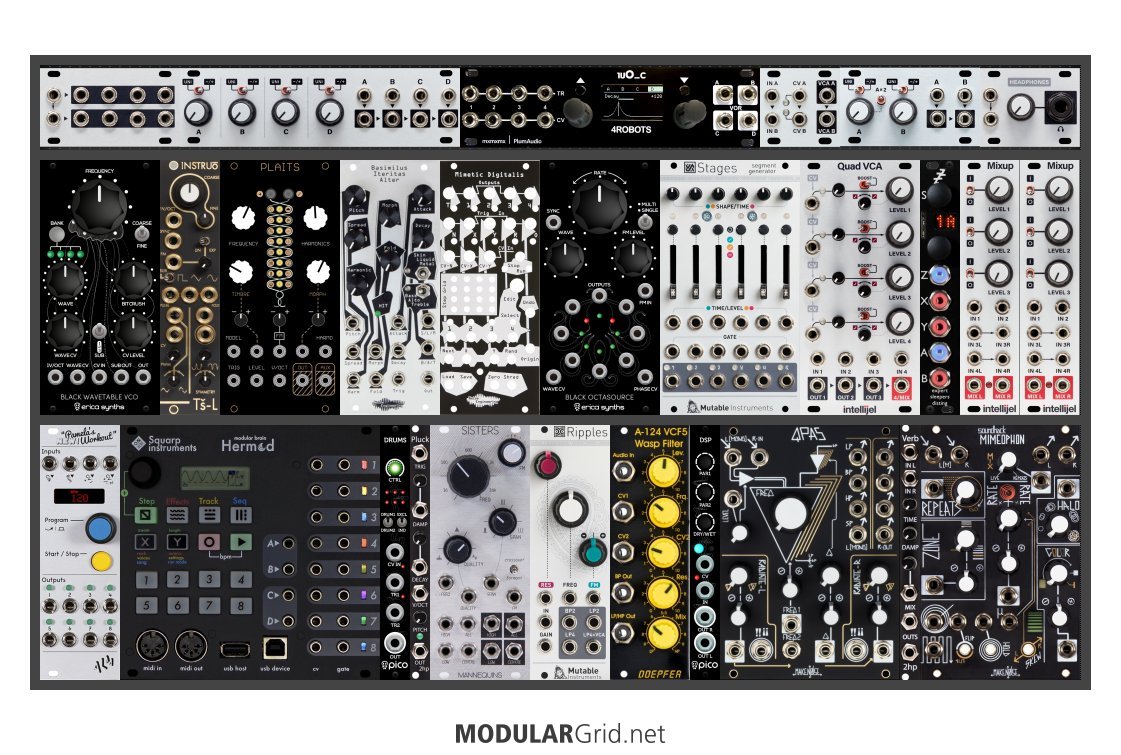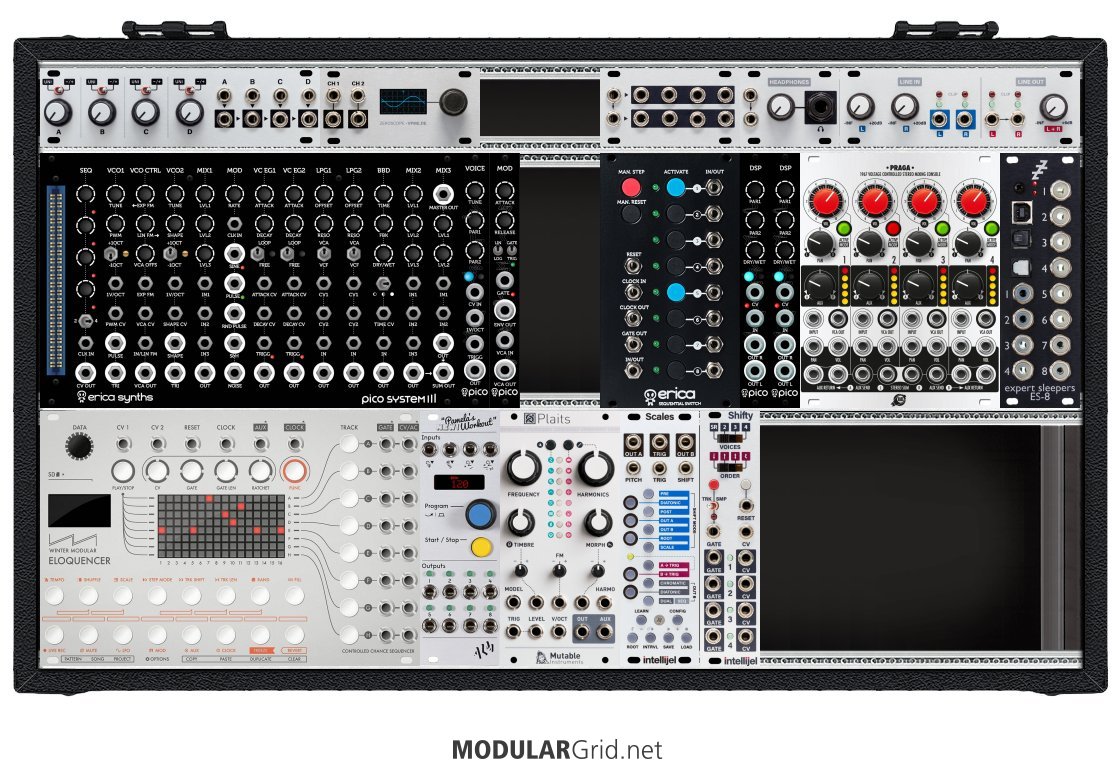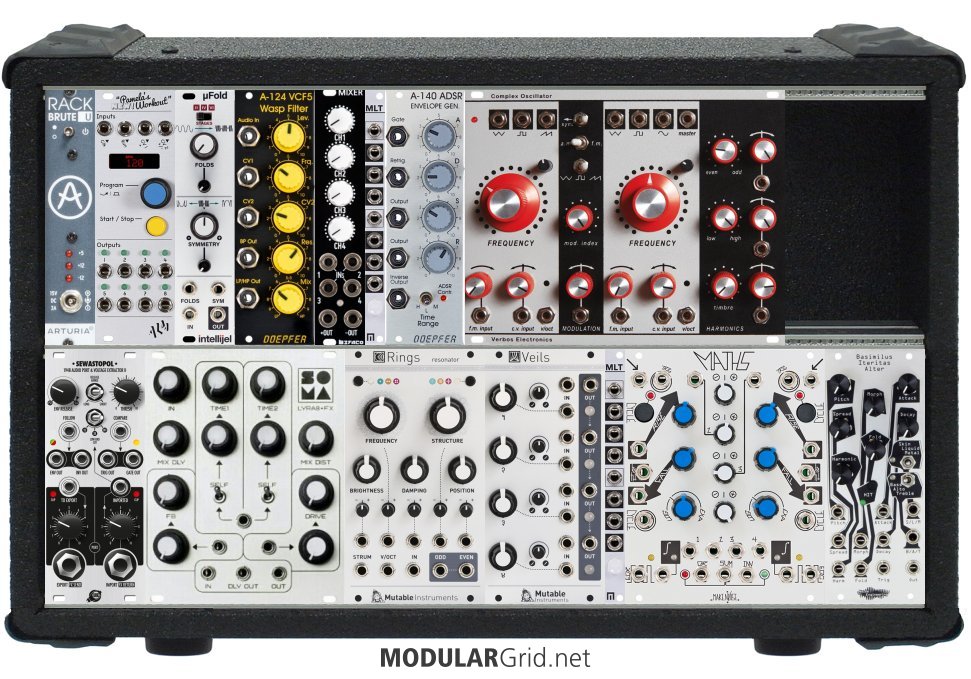Ha, seems I missed Ronin's answer, no email to tell me about this one weirdly enough.
Coming from Elektron machines, I don't mind a little bit of menu diving so maybe that's why I'm not bothered by the many functions included in the Disting and the need for a manual close-by. Another thing is that I intend to use it first to determine, as you suggested, which functions I find myself using the most and outline my future needs so I'm rarely changing function on it, looking at the manual every once in a while is fine. It's been stuck on Stereo Reverb mode for the best part of last week, so considering getting the 2hp Verb...
Thank you for going deeper in the sequencer subject, I've been investigating this all weekend. Basically, I don't find the Mimetic Digitalis (MD for short) hard to use, rather I find it limited for a few reasons:
- No onboard scaling
- Only 1 clock input, no division per track
- No copy/paste operations for a pattern or a step
- No way to go to the previous step other than Origin + advancing to it manually
These points make me spend too much time on programming sequences and out of laziness, I end up making simplistic stuff that gets boring very quickly. To be honest the MD feels to me like it would be better suited for CV modulation only (especially doing those tricks you describe with its inputs) rather than using it to sequence pitch like I'm doing now.
I've been looking at 1010Music's Toolbox or Squarp's Hermod to replace the Pamela's New Workout + MD combo I'm currently using to sequence the synth voices (I use steppy for the Pico DRUMS): more sequences, more tracks, hell, with one of those options I could maybe even remove Pam's New Workout entirely if it's really capable and feature packed.
I find the 8 sequences per project of the Hermod limiting as well, I posted a question on their forum yesterday to know if switching project can be done while keeping sync, no answer yet.
This is my shopping list for the sequencer:
ABSOLUTE MUST HAVES
- CV and Gate sequencing for 3 tracks
- Clock + Start/Stop via CV control
- Independent track length or clock division
- Around 26HP max, space in my rack is very limited and I dont want to end up with a rack completely full just yet
- At least 16 sequences of minimum 16 steps each
VERY APPRECIATED
- Mutes per track
- More CV capable outputs and sequences for tight parameter control on other modules
- At least 32 sequences of minimum 32 steps each
- Scales (I suck at music theory)
EXTRAS
- More sequences/projects
- Transpose sequences via CV
- Variable gate length per step
- Value gliding between steps
Do you guys have suggestions, any opinions about the 2 last contenders I picked or other options I haven't considered ?
The fever for new modules is unlikely to leave me any time soon especially if I go for one of the above sequencers which could allow me to remove the MIDI module in 1U format to direct MIDI straight from the OT to the sequencer, this would open up some more space in that 1U section. In fact, there is a O&C module for the Intellijel 1U format (Plum Audio's 1uO_c 4Robots), I just haven't had the time yet to look at that module too much. How useful is it, what do you use it for, what do you think I should be using it for in my setup ? In short, why are you suggesting it, am I missing out ?
As for filters (addressing Garfield's points about this), I think Mannequin's Sisters (nice quality setting with CV input) should be a nice fit for the sound I'm going for.
Finally, my search for the 3rd voice is nearing its end, the fight is between Noise Engineering's Basimilus Iteritas Alter and Mutable's Plaits, I'm currently heavily leaning towards the latter. Haven't played with the BSA and only a short amount of time with the Plaits but it seemed very deep in terms of the different sounds you can get from a single algorithm, and it has more than one :)
This is the current plan for the future:

--- Voltage control all the things ---





